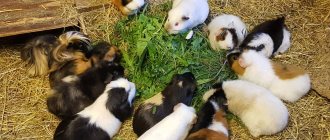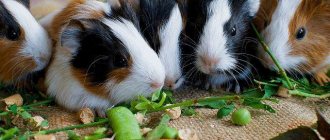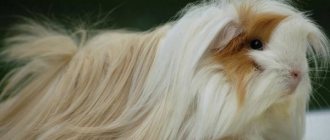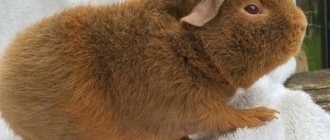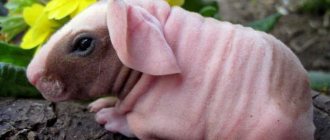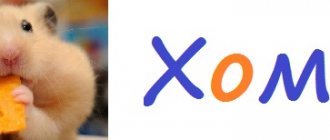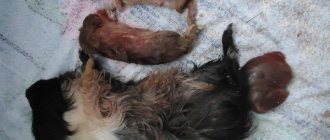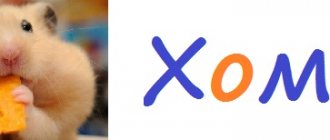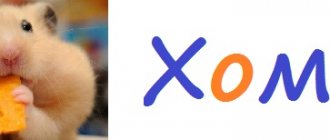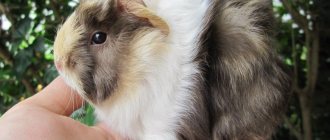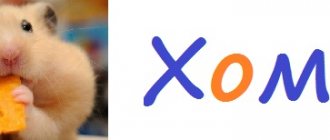Onions are a very common vegetable among us that add great flavor and aroma to any dish and salad. You might be wondering whether guinea pigs can eat onions or not? What if we've already fed one?
No, guinea pigs cannot eat onions. Onions belong to a category of vegetables called allium vegetables. The main problem with this type of plant is that it can cause serious health problems in guinea pigs. Among them, hemolytic anemia and anaphylactic shock are serious health problems.
Our guinea pigs cannot eat even a small amount of onion because it is a direct poison to them due to the presence of disulfide and thiosulfate compounds. These compounds are very toxic and even life-threatening to our guinea pigs because they damage their red blood cells. This leads to a variety of problems such as eye and mouth irritation, nasal discharge, respiratory and breathing problems, excess salivation, stomach upset and difficulty urinating. Consequently, they may suffer serious injuries.
Can guinea pigs have a shepherd's purse?
Shepherd's purse (Capsella bursa-pastoris) Has anti-inflammatory and diuretic effects, inhibits the development of cancer tumors. This plant should never be given to pregnant pigs because it causes uterine contractions.
Interesting materials:
How to make a colored background in Photoshop? How to make a color gradient in Photoshop? How to make a colored circle in Photoshop? How to make a colored circle on Instagram? How to make a color prefix in Minecraft? How to make colored rice? How to make colored text in Illustrator? How to make colored text in Minecraft on PC? How to make a colored bed in Minecraft? How to make a colored frame in Photoshop?
What is harmful for pigs?
Some foods are given to animals in limited quantities. They may not lead to serious poisoning, but they will definitely upset the rodent’s digestive system.
Vegetables
A list of vegetables that are not suitable for a pig’s daily diet or should be excluded completely:
- Tomatoes. Despite their nutritional value, the high content of acids (including citric, oxalic, abscisic), when fed daily, will lead to irritation of the rodent’s delicate stomach. Therefore, a small piece of tomato can be given no more than once a week.
- White cabbage, cauliflower, Brussels sprouts, red cabbage. It has a rich set of microelements, but the animal's digestive system is not designed to digest large quantities of cabbage leaves, which can cause severe diarrhea.
- Legumes are given only in the form of young sprouted stems. Boiled or raw peas and beans will cause bloating and poisoning. Let's say there is a small amount of fresh green peas.
- Potato. Eating large amounts of starch is harmful for the animal. Potato tops are the strongest poison.
- Radish, radish. Contain harsh essential oils that can severely harm the digestive system. Therefore, they do not need to be included in the diet.
- Animals should absolutely not eat garlic and onions to avoid burns to the esophagus.
- Bell peppers are given in limited quantities. It may upset digestion. It is absolutely forbidden to give hot pepper.
Fruits, berries
List of unwanted and prohibited fruits and berries:
- Sour apples are contraindicated for pigs.
- Lemon is strictly contraindicated for animals; it is a strong acid.
- Oranges and tangerines, peeled and peeled, should be well-ripened and sweet. Citrus peels are poisonous to rodents. In addition, the pig may have individual intolerance.
- Choose hard pears to avoid diarrhea.
- Banana is harmful because it can cause obesity.
- Melons (watermelon, melon) contain a lot of harmful sugars and weaken the stomach. Their use is limited.
- Stone fruits (plum, peach, apricot, cherry) are too sweet and disturb digestion.
Dried fruits are not on the list of prohibited foods. However, they must be prepared without the use of preservatives. You should not get carried away with them so that the animal does not get diabetes.
Animal products
Unlike hamsters, guinea pigs do not need food of animal origin. Their digestive system is capable of digesting only plant foods. You cannot offer them milk, cottage cheese, butter, meat, eggs, or fish. In their natural habitat they do not eat such food.
Herbs
The choice of grass and hay must be approached carefully. It is enough for an animal to eat a small amount of a poisonous plant to become poisoned.
Poisonous herbs include: celandine, datura, spurge, lily of the valley, poppy, hemlock, mustard, marsh marigold, foxglove, wild rosemary, night blindness, hellebore, buttercups, borer, larkspur. St. John's wort, milk thistle, coltsfoot, dandelion, and wormwood should be limited.
The animal should not eat herbs, for example, mint, thyme, sage, basil.
When there are doubts about edibility, such greens are not offered to the rodent.
Indoor flowers
The vast majority of indoor flowers are poisonous. Common plants such as aloe, monstera, kalanchoe, cyclamen, ivy, dieffenbachia, philodendron, spathiphyllum, violet should not be within the animal’s reach.
If your pet has enough food, he will not try to try indoor plants. Situations are different, so flower pots should be lifted from the floor.
Indoor flowers
During walks outside the cage, the animals sometimes gnaw on some indoor plants. This must be stopped immediately because most domestic plants are poisonous to pigs. It is better if the pots are located in places inaccessible to rodents.
The most popular indoor plants that are dangerous for pigs:
Palm trees and cacti should also be kept away from a curious pet.
About the benefits of succulent feed
Nettle
Common stinging nettle has a number of beneficial properties and vitamins. It contains a lot of vitamin C, carotene, B vitamins and carotene. Fresh or dried nettle is a good natural vitamin concentrate. Young nettle leaves are also rich in protein, starch, chlorophyll, carbohydrates and iron salts, potassium and copper, manganese and titanium, nickel, many types of tannins and organic acids. Another advantage of nettle is that it is nutritious. Nettle leaves and shoots contain a large amount of proteins, fiber, and fats.
Many breeders dry nettles to prevent vitamin deficiency in guinea pigs at the end of winter.
The leaves can be fed whole, or they can be made into powder and added to the main grain or concentrated feed. It is best to harvest nettles before flowering begins. Young shoots are mowed or only leaves are collected. Dry without pre-washing in a well-ventilated area, but out of direct sunlight.
Dandelion
This common and familiar plant is very useful for guinea pigs and in the summer it must be included in the animal’s diet. The leaves and roots of the plant are fed. Dandelion leaves are very rich in carotenoids, vitamin C, vitamins B and P. Dandelion leaves are good to use to improve digestion in animals, as well as to increase appetite. Dandelion roots are rich in sugar, inulin, and malic acid.
Spinach
Young spinach leaves are suitable for feeding. Spinach is also a source of large amounts of vitamins and proteins, iron salts, calcium and phosphorus. Just one hundred grams of spinach contains more than 700 mg of potassium.
Spinach can be fed not only fresh, but also dried and even frozen.
Cabbage
Headed cabbage is suitable for feeding fresh. Red cabbage is considered more nutritious and rich in vitamins. White and red cabbage is rich in vitamins C, carotene, B vitamins and iodine, pantothenic acid and many salts important for animal health. However, do not forget that cabbage leaves cause fermentation and gas formation in the intestines, so it is not recommended to feed a lot of cabbage leaves per day. Brussels sprouts can also be used to feed guinea pigs. It is rich in ascorbic acid, proteins, carotene, vitamins and salts of sodium, phosphorus and iron, as well as iodine and potassium.
Additional sources of vitamins and minerals
Most of all, a guinea pig needs vitamin C. Ascorbic acid is not synthesized at all in the body of rodents of this species. Therefore, animals must daily absorb a significant amount of food saturated with vitamin C. Phylloquinone and B vitamins can be absorbed in the guinea pig’s body only after repeated consumption, that is, after the animal eats its own feces. Therefore, a rodent that eats droppings cannot be stopped.
Of the minerals, salts and calcium are especially important for guinea pigs. Therefore, it is recommended to buy mineral sticks for your pet at the pet store. It is also permissible to treat your rodent with fish oil and bone meal as useful supplements.
There must be a drinking bowl with fresh water in your pet's cage. An adult animal needs 250 ml of fluid per day, but a pregnant female needs a little more. It is recommended to buy a drinking bowl for your pet. In such a device, the water will not become dirty or spill.
It is advisable to give the rodent bottled or filtered water rather than boiled water. The owner must carefully ensure that dirt and debris do not get into the drinking bowl. By consuming contaminated water, your guinea pig can contract an infection.
How to choose the right mating partner
Here's how to choose the right partner for mating:
The best age for a male is from eight months to a year. It’s better not to let old “pigs” into breeding.
It is very desirable that the “groom” belongs to the same breed or at least variety. In this case, there will be much fewer problems with childbirth and pregnancy.
The optimal weight is from 0.7 to 1 kg. The female, by the way, should weigh about the same. The animal should be neither obese nor emaciated.
https://www.youtube.com/watch?v=GsW_Y5o5aZM
Finally, the pet must be completely healthy. To make sure of this, it is advisable to have the “bride and groom” examined by a veterinarian.
It is highly desirable that the animals be approximately the same in character. Two fighters can seriously damage each other’s skins; if you pit a melancholic and active pet, normal mating will not work either.
Feeding recommendations
The pet needs to be fed correctly so that its health remains normal, its teeth are strong, and its coat looks well-groomed. Your pet's daily menu should include:
- 50% hay; 20% dry food; 20% juicy food; 10% greens.
An important question for owners is how many times a day to give food to a guinea pig. Feeding is carried out 3 times a day. The feeder cannot be removed from the cage; food must always be available to the animal. There should also always be hay in the cage.
If there is no dry food in the animal’s diet, then it must be replaced with a similar weight of greens and raw vegetables. The menu should be varied; the rodent must be offered at least three different vegetables per day and certainly grass. It is prohibited to give your pet grass collected on the sides of highways and in industrial areas.
The optimal menu is vegetables and fruits before noon, dry food after noon.
Results
Guinea pigs are unpretentious in maintenance and care and are not picky about food. At first glance this seems like too many restrictions. In fact, the rule is simple: food should be healthy, low-fat, free of chemicals, spices, salt, and not irritate the esophagus. Grains, greens, most fruits and vegetables, branches of fruit trees - the list of permitted products is very large. In addition, you can always buy ready-made balanced grain mixtures in the store.
There are a number of foods that should not be given to guinea pigs at all (for example, rhubarb or potato tops), and there are foods that, although they will not cause immediate irreparable harm to the pig, are still extremely undesirable for the diet of these animals.
Let's look at what is classified as “forbidden”.
So, guinea pigs should not be given:
1. Dairy products - milk, yogurt, cheese, etc. Guinea pigs are lactose intolerant because they do not have the enzyme to digest it. When dairy products enter the body, pigs develop gas and diarrhea.
Diet
Depends on the physiological state. So, adult animals are always fed in the morning and evening at the same time. For pregnant pigs, feed is increased to 4 times a day.
It is important to understand that a hunger strike is unacceptable for rodents, as is a sudden change in diet. Any new product is introduced gradually and in small doses
Overeating also has a negative effect - diseases of the intestinal tract and obesity will be ensured.
An approximate diet of what guinea pigs eat per day is presented in the tables.
Possible diet depending on the time of year (per day)
| Type of feed | Winter | Spring | Summer | Autumn |
| Vegetables, city | 100 | 100 | 100 | 100 |
| Root vegetables, | 30 | 30 | 20 | 20 |
| Fresh greens, | — | — | 300 | 300 |
| Seno, city | 10-20 | 10-20 | — | — |
| Bread, Mr. | 20-30 | 20-30 | 10-20 | 10-20 |
| Grain, city | 40 | 40 | 30-40 | 30-40 |
| Milk, ml. | 20 | 20 | 20 | 20 |
Nutrition for young and adult guinea pigs (daily ration)
| Adults | Young | |
| Grain, city | 30-40 | 20 |
| Bran, Mr. | 15 | 10 |
| Seno, city | 60 | 30-40 |
| Green, city | 500 | 200-300 |
| Root vegetables, | 100 | 50 |
| Milk, ml. | 15 | 5-10 |
If you answer the question of which food is better, then experts do not have a common opinion on this matter. Many are inclined to think that this is oat bran, carrots and beets, as well as hay in winter or grass in summer. Other professional breeders are not against constantly feeding animals with high-quality and well-balanced factory-made feed.
Nutrition for pregnant pigs and newborn piglets
Pregnant pets must eat well and of high quality. The diet of furry mothers should be rich in proteins and vitamins. It is useful to give pregnant females carrots, beets, and wheat sprouts. You can periodically add a little milk to the water. Rosehip infusion brings great benefits to the body of a pregnant pig.
If the female who gave birth does not have milk, then the owner will have to feed the cubs on his own using a syringe. Artificial food for small piglets includes low-fat cream and the probiotic Linex. The cream is taken into the syringe and a tenth of the probiotic capsule is added to it. The resulting solution is nutritious and beneficial for the digestive system of babies. The food in the syringe is warmed to room temperature. Piglets take 1 ml of food every hour. Two-week-old babies can be switched to cereal porridge without milk. The piglets sit on the porridge until they get used to “adult” food.
Green feed
This food for guinea pigs is the most healthy and natural. Your pet should eat fresh greens, rich in fiber and nutrients, to maintain normal functioning of the intestinal tract. Below is a list of herbs recommended for guinea pigs:
- cereal sprouts; spinach; lettuce leaves; clover; carrot tops; beet tops; dill, parsley, cilantro; plantain; yarrow; chamomile; dandelion leaves.
You need to be very careful when collecting grass for your pet. Among the useful plants there may be poisonous ones. Therefore, you should not put a bunch of grass in a cage without carefully sorting it out first. Fresh greens for your guinea pig should be thoroughly washed.
The most important food for guinea pigs. Hay not only normalizes the functioning of the intestinal tract, but is also an excellent tool for grinding down the incisors of rodents. Like grain, hay is sold at any pet store. When purchasing, it is important to carefully check that the dried grass is not affected by mold. Rotten and moldy hay can harm your pet's body. If the owner is engaged in the preparation of hay on his own, then he must carefully inspect the collected grass for the presence of prickly, weeds, and poisonous plants.
Other
Among other things, it is worth mentioning that guinea pigs do not tolerate processed foods: fried, boiled, pickled, baked, canned. The owner must not feed the pet food from his table. Including sweets: chocolate, marshmallows, cookies, etc.
Other prohibited products include:
- mushrooms;
- sauces - ketchup, mustard, etc.;
- sorrel;
- plantain.
There are special sweets for rodents - drops. They come in different flavors - berry, citrus, vegetable. Pets really like them, they should be used carefully and offered occasionally, like regular fruits. Drops contain sugar, which is harmful to animals.
Before offering your pet something tasty, you should check the list of prohibited foods. If there is no information on a specific product, the best option is to put it aside and choose something else.
Its well-being and life expectancy depend on the proper organization of a guinea pig’s daily diet. There is a list of foods that should not be given to guinea pigs under any circumstances. Pet owners should know about this so as not to make a fatal mistake.
Grain feed
A guinea pig needs to eat at least 20% grain per day. Grain food for rodents is sold in any pet store. The finished product usually includes:
- barley; oats; millet; sunflower seeds; corn grains.
In addition to grain, prepared feeds may include vegetable granules and vitamin supplements.
Dry pet food is easy to prepare yourself; you just need to buy different types of grains on the market and then mix them. But you need to take into account that the main ingredient is oats; guinea pigs eat it more readily than other grains. Solid grain food should always be present in the diet of rodents. Animals need it to grind down their continuously growing teeth. If a rodent eats only raw and soft food, then its incisors become unnaturally elongated and interfere with the ability to absorb food. As a result, the animal dies from starvation.
